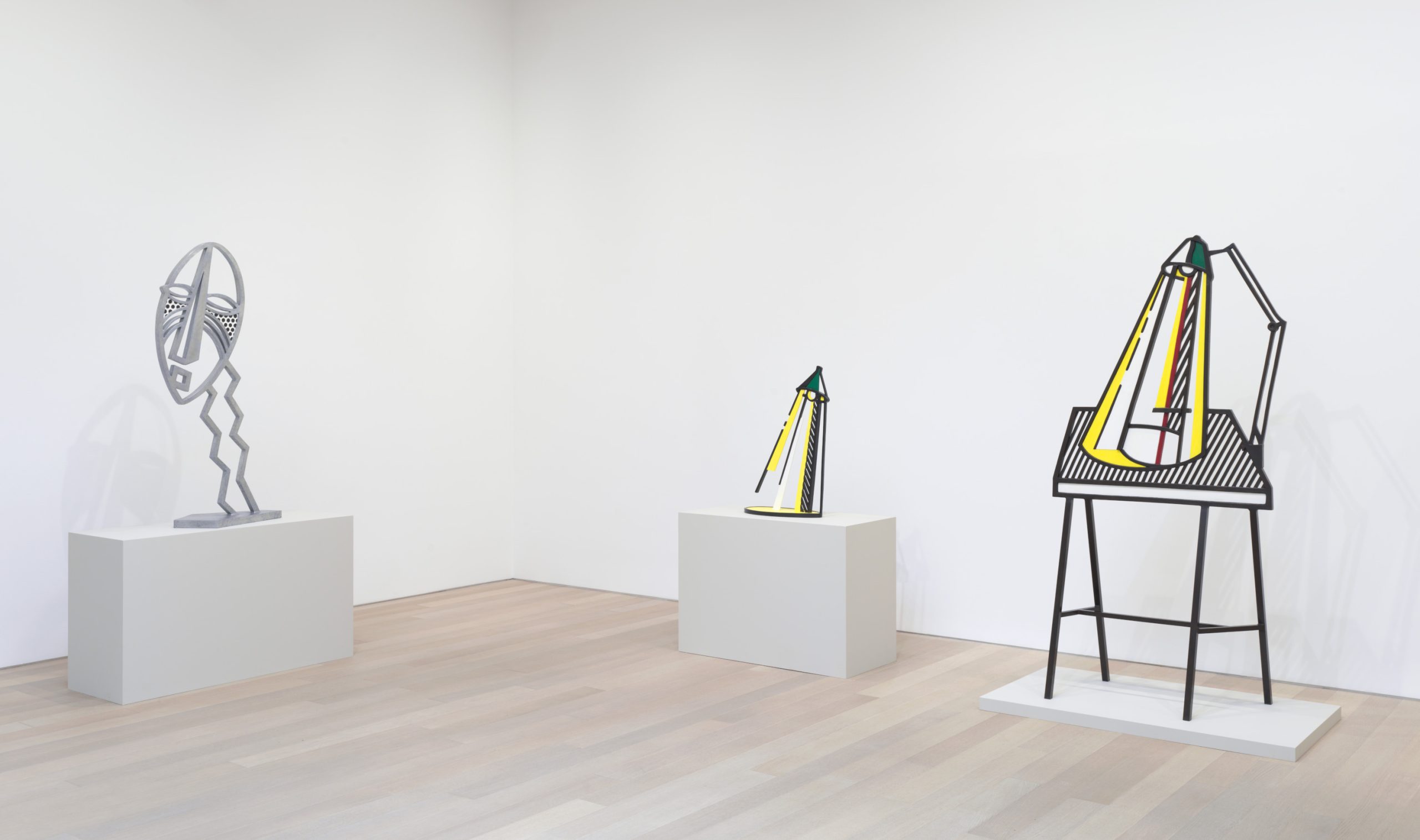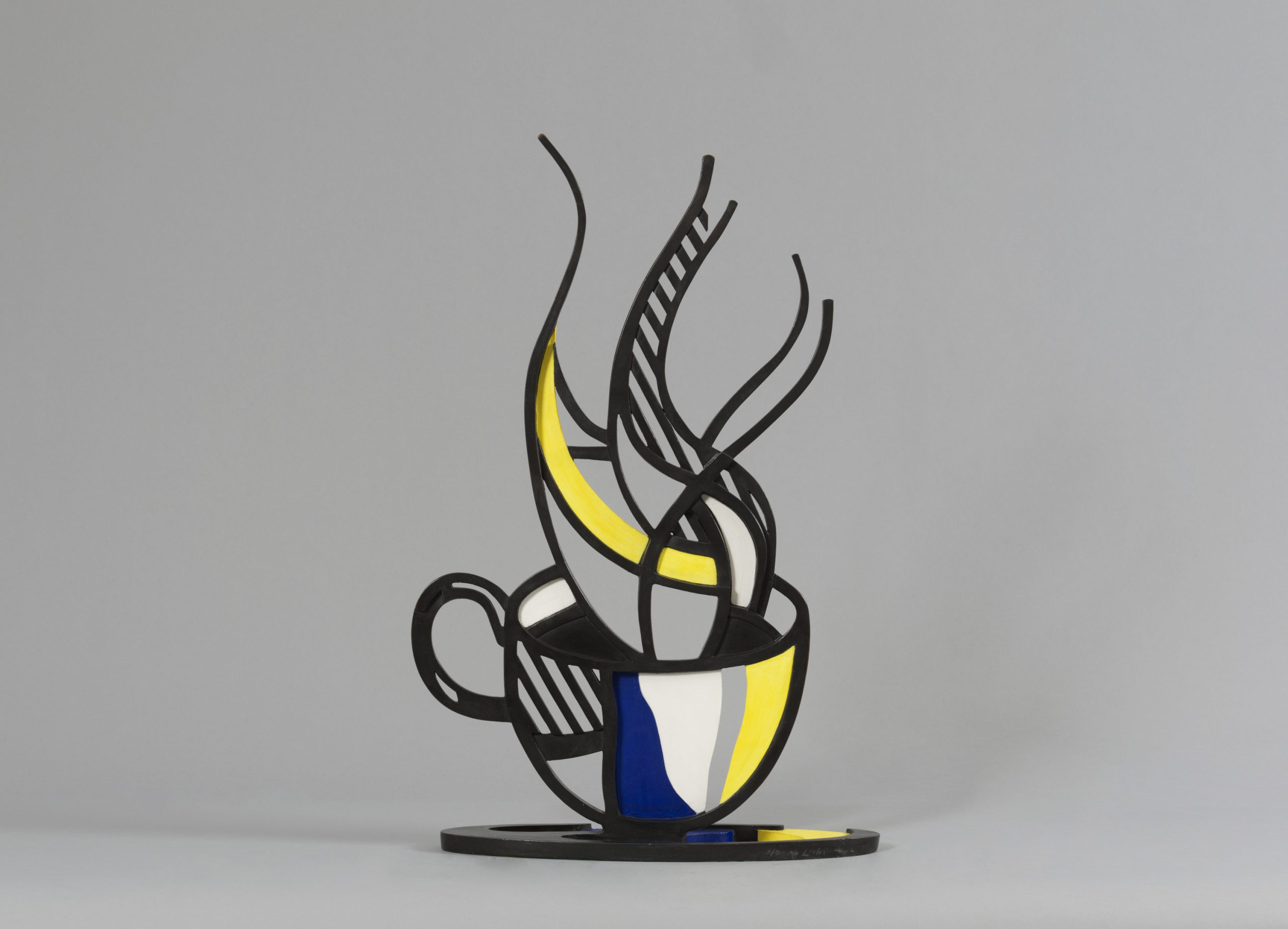To commemorate the centenary of the late artist Roy Lichtenstein’s birth in 2023, Gagosian in New York held an exhibition of his work, curated by the art dealer Irving Blum, who was a close friend of the artist. Lichtenstein Remembered steers away from the pop art paintings that Lichtenstein is well known for, and instead focuses on the sculptural works made from 1970 until shortly before his death in 1997.
Like his paintings, in which the artist used colour, line and Ben-Day dots to give the illusion of shape and form, Lichtenstein used similar techniques in his sculpture. Yet, as works like Cup and Saucer II (1977) demonstrate, the three dimensional quality of these sculptures is flattened to such an extent that it is almost denied, giving the impression of a two dimensional painting that appears in space.
Lichtenstein based his sculptures on sketches, some of which are also included in Lichtenstein Remembered, and which were made into wooden maquettes by the sculptor Carlos Ramos. These were then used to make moulds for the bronze casts, painted using the same colour palette that the artist used for his paintings.
Many of the works on show at Gagosian exemplify the ways in which the artist was interested in fixing something fleeting or fluid in time: this is evident in Lichtenstein’s comic book paintings of explosions from the 1960s, but also, for example, in his sculptures of water in the series Glass. As his wife, Dorothy Lichtenstein explains in the exhibition catalogue of the same name, “I think he liked to portray ephemeral things in a concrete way—like the smoke from a coffee cup or the rays from a lamp or the transparency of water in a glass.” Plumes of white, yellow and hatched steam rise from Lichtenstein’s cups in such a way that evokes movement but remains fixed in time.
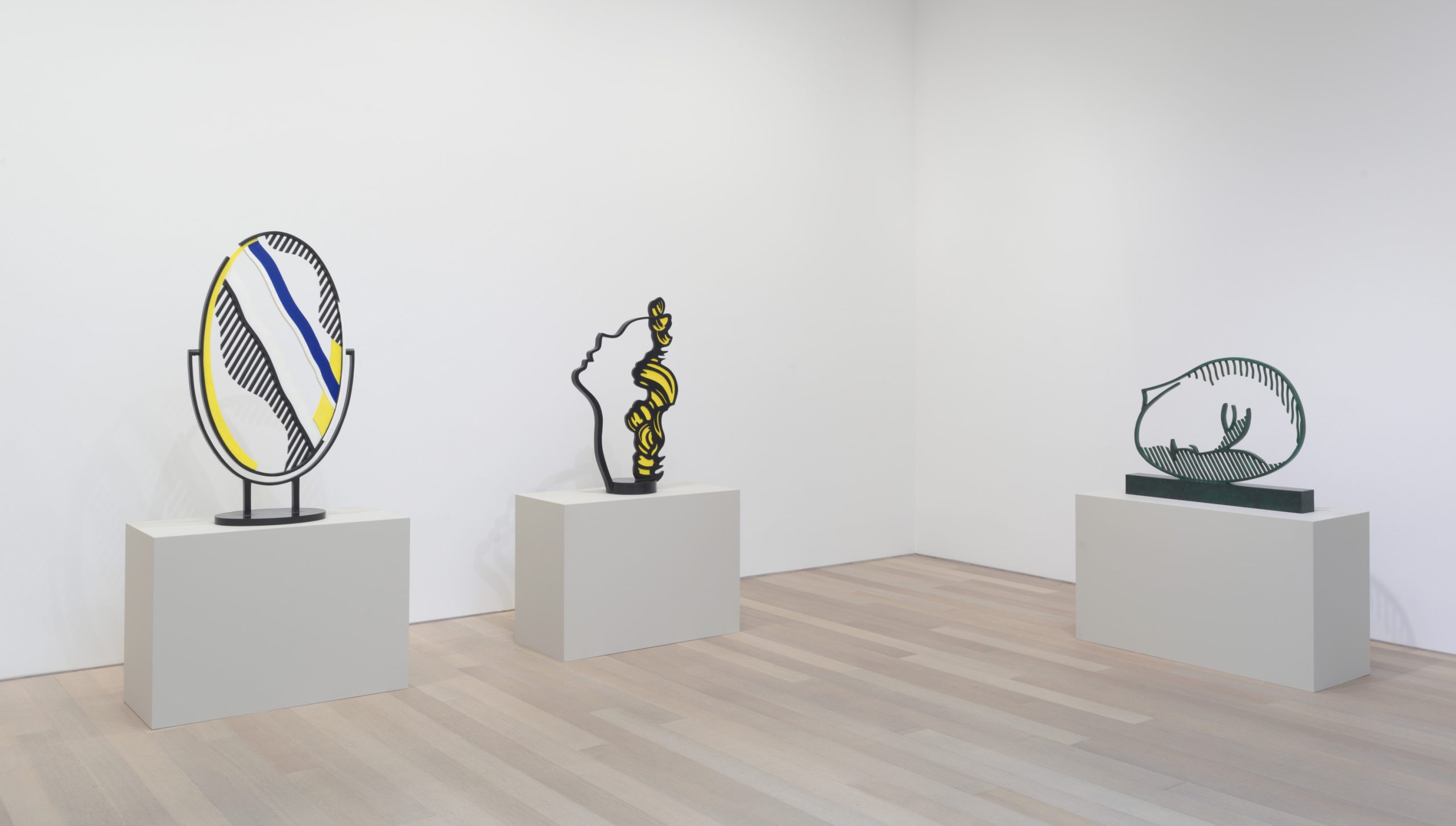
These sculptures, of oversized glasses and coffee cups, demonstrate the playfulness that Lichtenstein often used in his work—something that he used to critique art theory of the day. As the essayist Adam Gopnik writes in Lichtenstein Remembered, it was in the 1970s, when he was working on many of the sculptures on show at Gagosian, that his art “came of age […] as he widened the range of his reference, increased the fluidity of his puns, the overlapping echoing of his imagery. He made simple-looking jokes of steaming coffee cups and lighting-bending water glasses that contained within them, koanlike, compressed meditations on the history of modernism.”
If painting should embrace flatness as its definitive formal quality, as the art critic Clement Greenberg had proclaimed of modernism, then the flatness of Lichtenstein’s sculptures turned such a theory on its head. As Larry Gagosian writes in the foreword to Lichtenstein Remembered, the artist’s “command of art history and fundamental understanding of the problems inherent to art making allowed him to create with deceptive simplicity.”
His work was loaded with art historical references: sometimes this was explicitly so, as in Sleeping Muse (1983), a patinated bronze sculpture that closely resembles a 1910 bronze sculpture of the same name by Constantin Brâncuși. In other examples, the references are more subtle, like Cup and Saucer, where the use of colour recalls that of Piet Mondrian, and the form has an Art Deco quality that Lichtenstein was often drawn to.
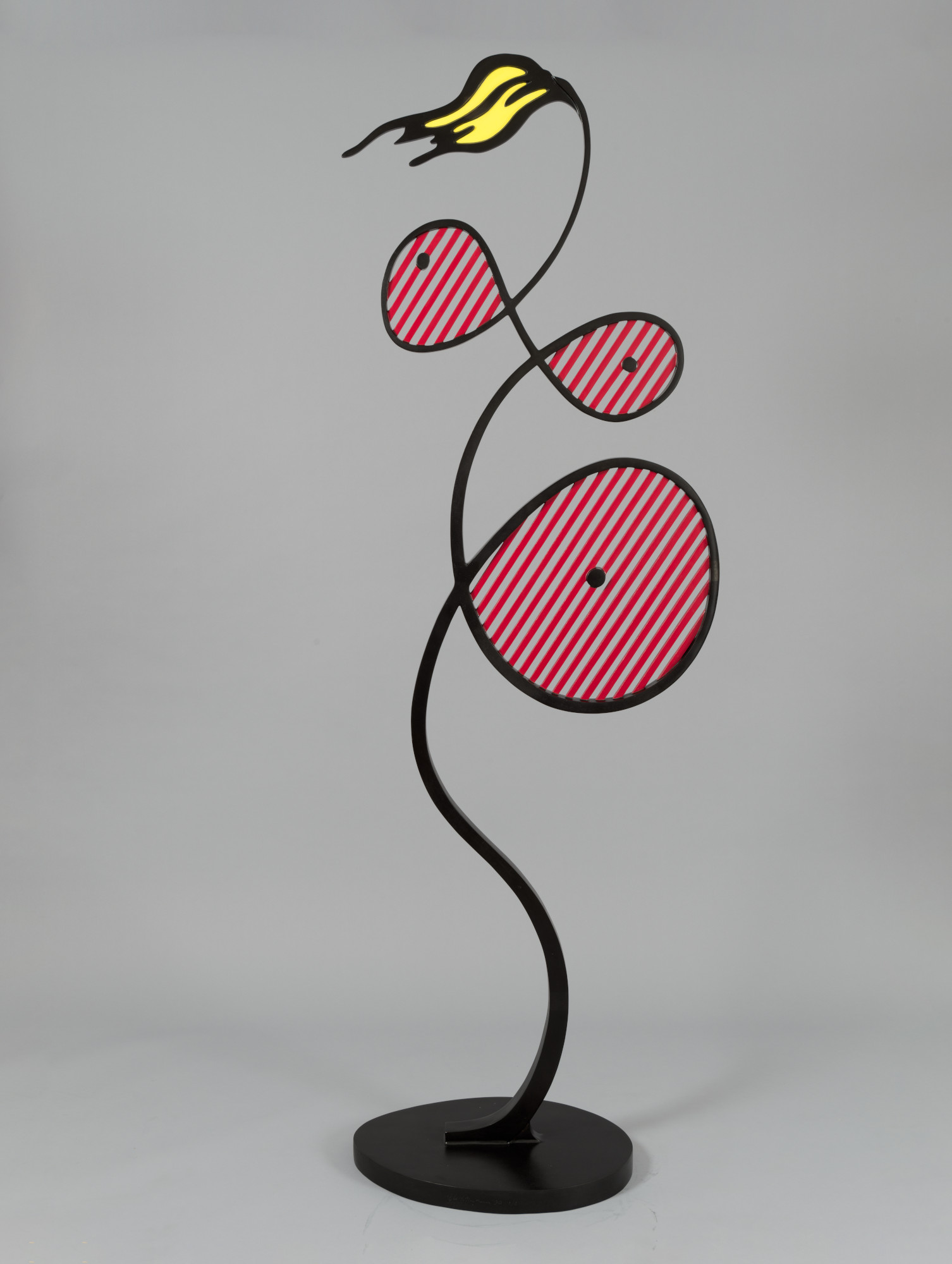
In an earlier series of sculptures from the late 1960s, Lichtenstein explored the ubiquity of Art Deco motifs in architecture and interior design, using things that one might “find” in the lobby of a building, like doorways and bannisters, as the inspiration for works cast in marble, brass and bronze. The objects that became the basis of his later sculptures that are on display at the Gagosian—cups, glasses, lamps on tables and mirrors—have a similar ubiquity to them, as items likely to be found in the twentieth century home interior.
Mirrors were something that the artist turned to again and again—firstly in painting in the late 1960s, and then in sculpture, as in Mirror I (1976). As both an object and a motif used throughout art history, the mirror is laden with symbolic associations (vanity, for example), but in Lichtenstein’s rendering, the mirror is deprived of its ability to reflect. Instead, the use of hatching and coloured shape on the “surface” of the mirror suggests a reflection. Though we recognise the mirror sculpture as an object, we can only look through it, rather than into it, or around it (to paraphrase Gopnik’s essay in the catalogue).
As the critic Lawrence Alloway wrote of Lichtenstein’s painted mirrors in 1979, “The objects are presented legibly, indeed with high polish and impact, but they are qualified by the paradox of a matt mirror […] By taking, as Lichtenstein always does, pre-existing signs as his subject matter, he demonstrates not that art feeds off art, but that art partakes of the provisional and arbitrary nature of our knowledge of the world.”
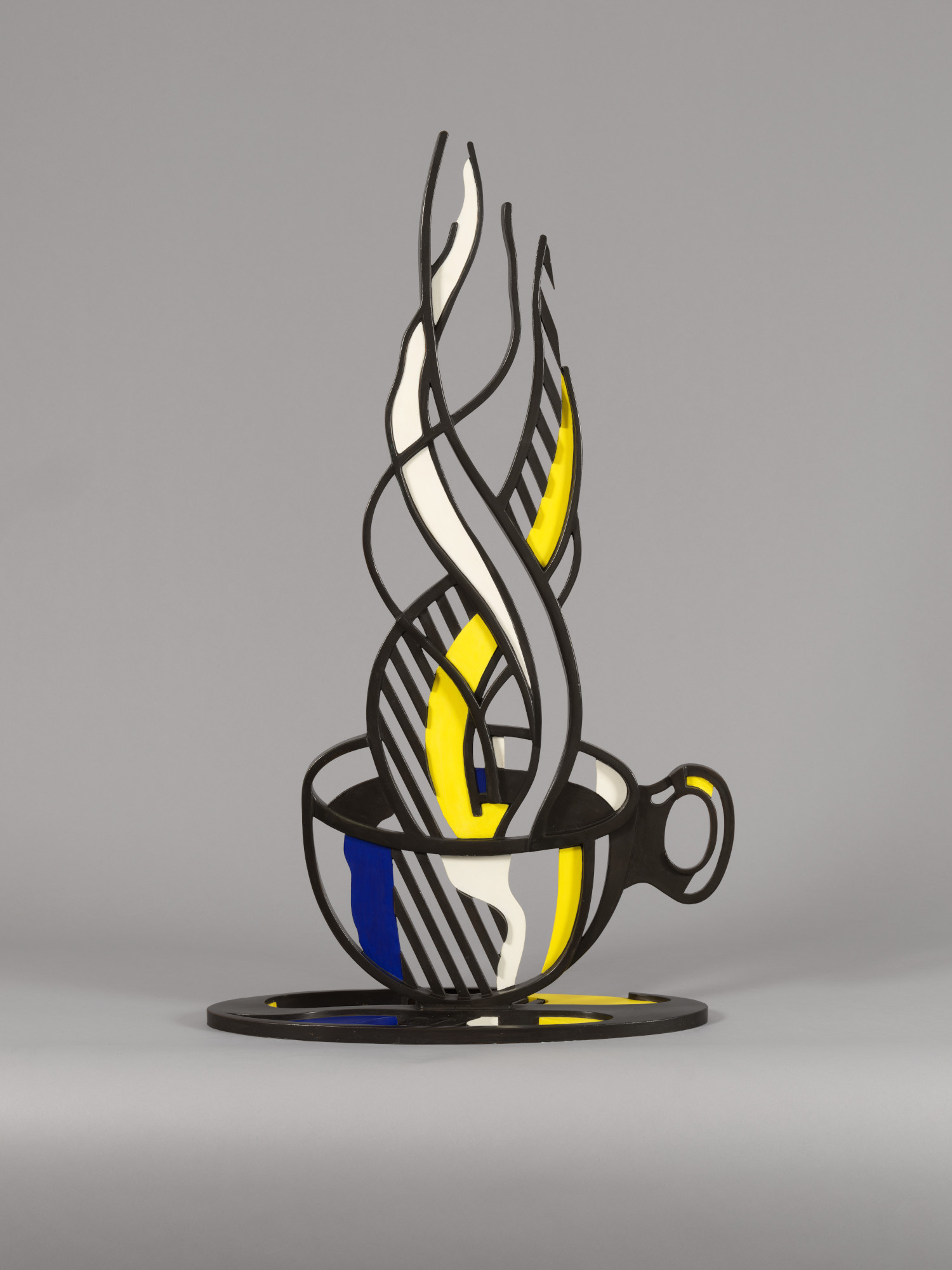
Sculpture is something that, as Dorothy explains in Lichtenstein Remembered, the artist was as serious about as he was painting: “Sometimes he would put something in a painting and then decide it would make a better sculpture. Or he would paint one of his sculptures in the interior paintings.” The interior was another theme that the artist explored, starting with his series of Artist’s Studios in the early 1970s, and later expanded in the 1990s through his depictions of living room and bedroom interiors, inspired by advertisements for furniture.
Lichtenstein often included art historical references in these works—including references to his own art. As Robert Fitzpatrick, the former director of the Museum of Contemporary Art in Chicago where an exhibition of Lichtenstein’s interiors was exhibited in 1999, mused, when looking at Lichtenstein’s interiors paintings, are depictions of mirrors merely a reference to the artist’s series of mirror paintings?
While many of these large-scale interior paintings, like the five-panelled painting Wallpaper with Blue Floor Interior (1992), resemble the stylised interiors seen in magazines such as Architectural Digest, they remain uninhabitable. The impenetrable home interior was something Lichtenstein explored from the perspective of the exterior too, with the large public sculptures House I and III from the late 1990s (House II, meanwhile, is a wall-mounted relief). Here, the three dimensionality of the house remains an optical illusion and seen from certain angles it appears as if it is inside-out. Just as with sculptures like Lamp on Table (1977), we may think we are looking into the light, but the surface is intentionally flat.
